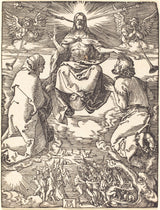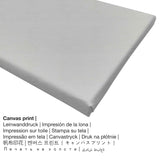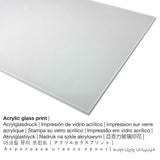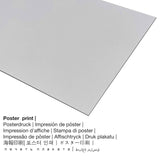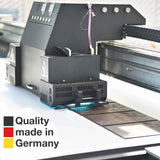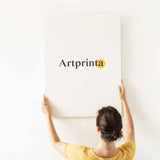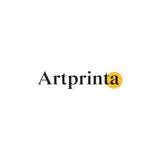Albrecht Dürer, 1510 - Ikpe ikpe-azụ - ọmarịcha nka
Ụtụ gụnyere. Mbupu gbakọrọ na ndenye ọpụpụ.
Nkọwa izugbe sitere na National Gallery of Art (© - National Gallery of Art - www.nga.gov)
Ọkara: Ịkpụ osisi
This Last Judgement is one of a series of woodcuts created by Dürer to illustrate a book called the Small Passion. Dürer's skill as a woodcutter is particularly evident here in his ability to create the illusion of folding and similar small details. The imaginatively rendered dragon in the bottom left of the scene serves as the gate to Hell; various demons and devils push and pull sinners into the dragon's mouth. Towards the bottom left, on the other hand, we see the chosen few being shown the way to Heaven. Jesus is central to the scene, and this is in accordance with his central role in human salvation. The figures kneeling before Christ are the Virgin Mary and St. John.
( Ederede: Emily Wilkinson )
Kedu ụdị ngwaahịa anyị na-ewetara gị?
In 1510 na nwoke German onye na-ese ihe Ọ bụ Albrecht Dürer created the 16th century piece of art. Moveover, the artpiece belongs to the collection of Nnukwu osisi nke Art, which is the museum of the US-American nation that preserves, collects, exhibits, and fosters an understanding of works of art. We are pleased to reference that this artwork, which belongs to the ngalaba ọha a na-enye ya site n'ikike nke National Gallery of Art, Washington.Ebe E Si Nweta nke ihe osise:. Kedu ihe ọzọ, nhazi nke mmepụta dijitalụ dị n'ime Eserese format ma nwee oke nke 3: 4, nke pụtara na ogologo bụ 25% mkpụmkpụ karịa obosara. Albrecht Dürer was a painter of German nationality, whose style was mainly Northern Renaissance. The Northern Renaissance painter lived for a total of 57 afọ, amuru na 1471 and died in 1528 in Nuremberg.
Họrọ nhọrọ ihe
Anyị na-enye ihe dị iche iche dị iche iche na nha maka ngwaahịa ọ bụla. Ka ị kwekọọ n'ihe ị chọrọ nke ọma, ị nwere ike họrọ n'ime nhọrọ nhazi ngwaahịa ndị a:
- Mbipụta kanvas: The printed canvas material mounted on a wood frame. A canvas has the distinctive look of three-dimensionality. The canvas print creates a familiar and positive look. A canvas of this artpiece will give you the unique chance of transforming your fine art print into a large artpiece like you would see in a gallery. How do I hang a canvas on my wall? Canvas prints are relatively low in weight, which implies that it is easy to hang the Canvas print without additional wall-mounts. Canvas prints are suitable for all kinds of walls.
- Aluminom dibond mbipụta (ọla): This is a metal print made on aluminium dibond with an impressive depth. The non-reflective surface structure creates a fashionable look. Colors are luminous, the details of the print are crisp. This print on Aluminum Dibond is the most popular entry-level product and is a truly modern way to display fine art reproductions, because it puts the viewer’s focus on the image.
- Poster (akwa akwa akwa): A poster is a printed cotton canvas paper with a slight surface structure, that reminds the actual version of the artwork. It is qualified for placing the fine art print in a custom-made frame. Please bear in mind, that depending on the size of the canvas poster print we add a white margin of something between 2-6cm around the painting, which facilitates the framing.
- Mbipụta iko acrylic (nke nwere ezigbo mkpuchi iko): An acrylic glass print, often referenced as a print on plexiglass, makes your chosen original work of art into wonderful décor. Your own replica of the work of art is manufactured with state-of-the-art UV print technology. The result of this are vibrant, sharp colors. Our real glass coating protects your selected fine art print against light and external influences for many decades.
Nchịkọta ihe nkiri
| Aha onye nka: | Ọ bụ Albrecht Dürer |
| okike onye nka: | nwoke |
| Obodo onye nka: | German |
| Ọrụ onye na-ese ihe: | onye na-ese ihe |
| Mba onye si: | Germany |
| Nhazi nke onye nka: | nna ukwu ochie |
| Ụdị nka: | Northern Renaissance |
| Akwụsị: | 57 afọ |
| A mụrụ: | 1471 |
| Afọ nwụrụ: | 1528 |
| Nwụrụ na (ebe): | Nuremberg |
Data ndabere na mpempe nka
| Akụkụ nka: | "Ikpe ikpeazụ" |
| Nhazi: | sere |
| Okwu nche anwụ: | nka ochie |
| oge: | 16th narị afọ |
| Emepụtara na: | 1510 |
| Afọ nka: | gbara afọ 510 |
| Egosiputara na: | Nnukwu osisi nke Art |
| Ebe ngosi nka: | Washington DC, Njikota Obodo Amerika |
| ibe weebụ: | Nnukwu osisi nke Art |
| License: | ngalaba ọha |
| Site n'aka: | National Gallery of Art, Washington |
Nkọwapụta ngwaahịa
| Nkewa ngwaahịa: | nka nka |
| Mmeputakwa: | dijitalụ mmeputakwa |
| Usoro mmepụta: | UV kpọmkwem obibi |
| Production: | arụpụtara na Germany |
| Ụdị ngwaahịa: | a na-achọ |
| Ojiji ngwaahịa: | ihe osise nka, nka mgbidi |
| Ndepụta: | nhazi ihe osise |
| Oke akụkụ onyonyo: | 3: 4 - ( Ogologo: obosara) |
| Akụkụ onyonyo pụtara: | ogologo bụ 25% mkpụmkpụ karịa obosara |
| Ụdị ihe dị iche iche: | Mbipụta kwaaji, mbipụta ọla (aluminium dibond), mbipụta enyo acrylic (nwere ezigbo mkpuchi iko), mbipụta akwụkwọ mmado (akwụkwọ kwaaji) |
| Mbipụta kanvas (akwa akwa na etiti ihe ndọtị): | 30x40cm - 12x16", 60x80cm - 24x31" |
| Mbipụta iko acrylic (nke nwere ezigbo mkpuchi iko): | 30x40cm - 12x16", 60x80cm - 24x31" |
| Nhọrọ nha nke akwụkwọ mmado (akwụkwọ kwaaji): | 30x40cm - 12x16", 60x80cm - 24x31" |
| Nhọrọ aluminom dibond (ihe aluminom) nhọrọ: | 30x40cm - 12x16", 60x80cm - 24x31" |
| Igwe onyonyo: | enweghị etiti |
Nkwupụta iwu: We try what we can to describe our products in as much detail as possible and to illustrate them visually in our shop. Nonetheless, the colors of the printing material and the printing may differ marginally from the image on your device's monitor. Depending on the settings of your screen and the quality of the surface, not all colors are printed as realisitcally as the digital version. Given that the fine art prints are printed and processed manually, there may as well be slight variations in the motif's size and exact position.
Nwebiisinka © | Artprinta.com (Artprinta)

